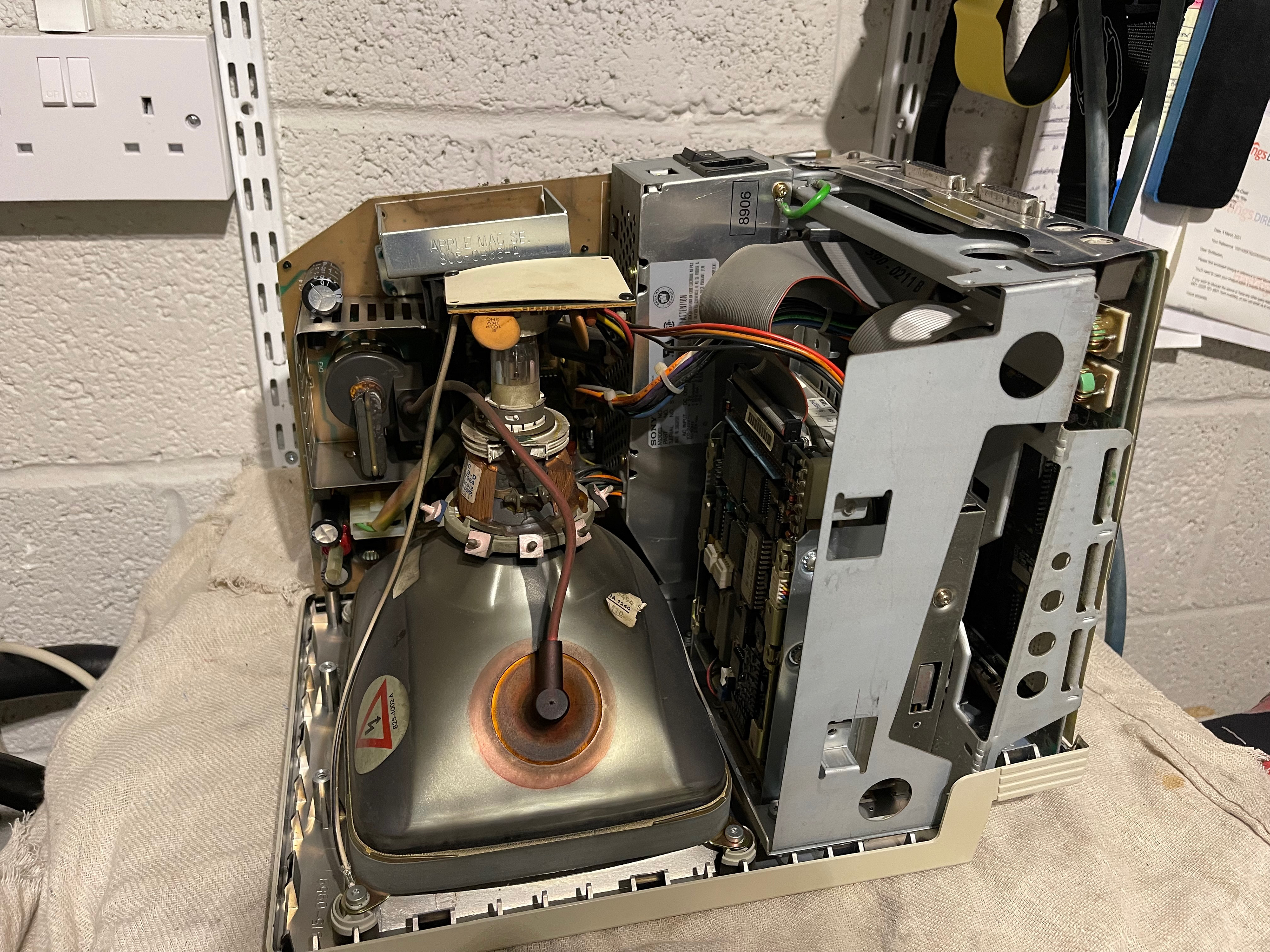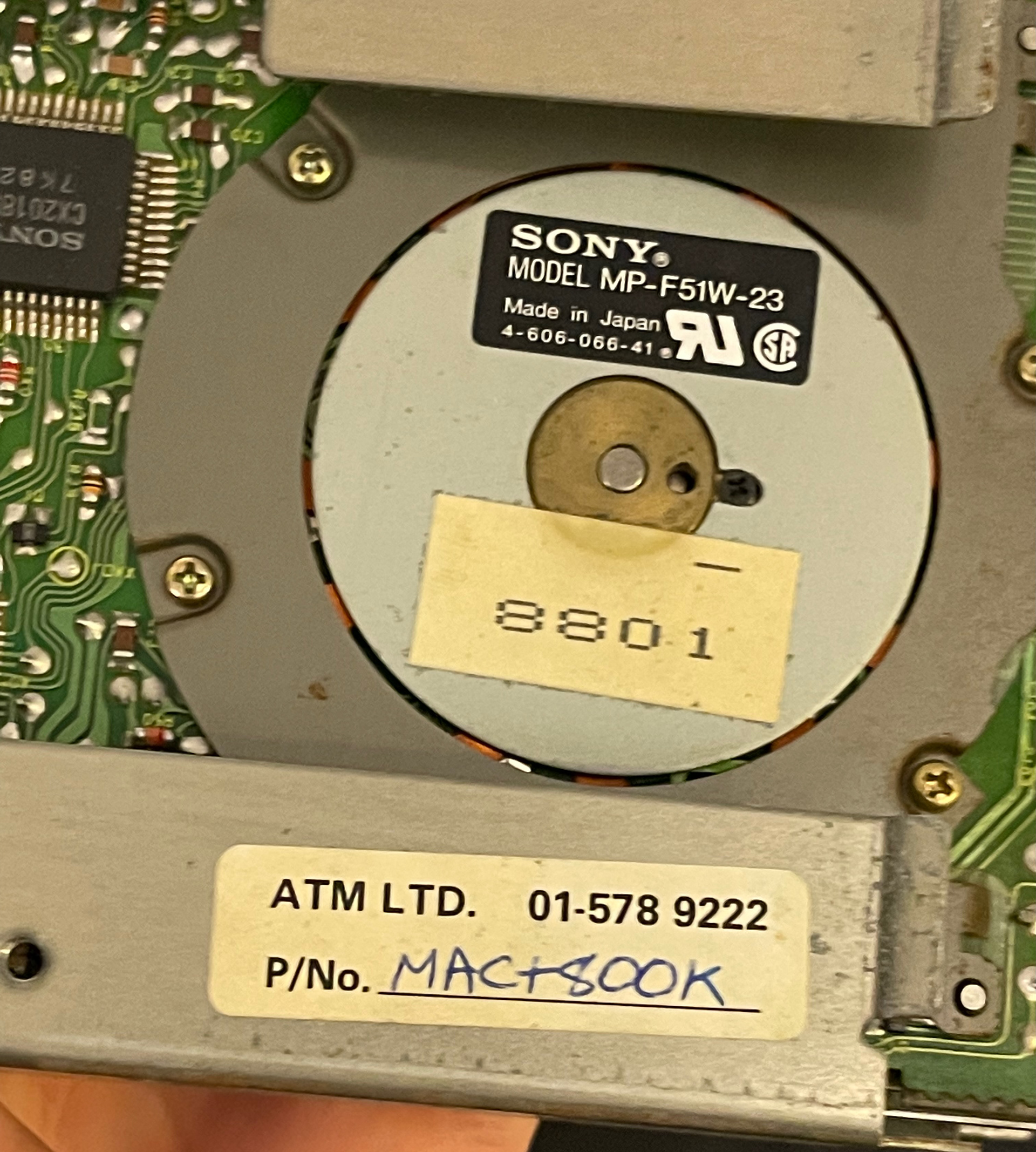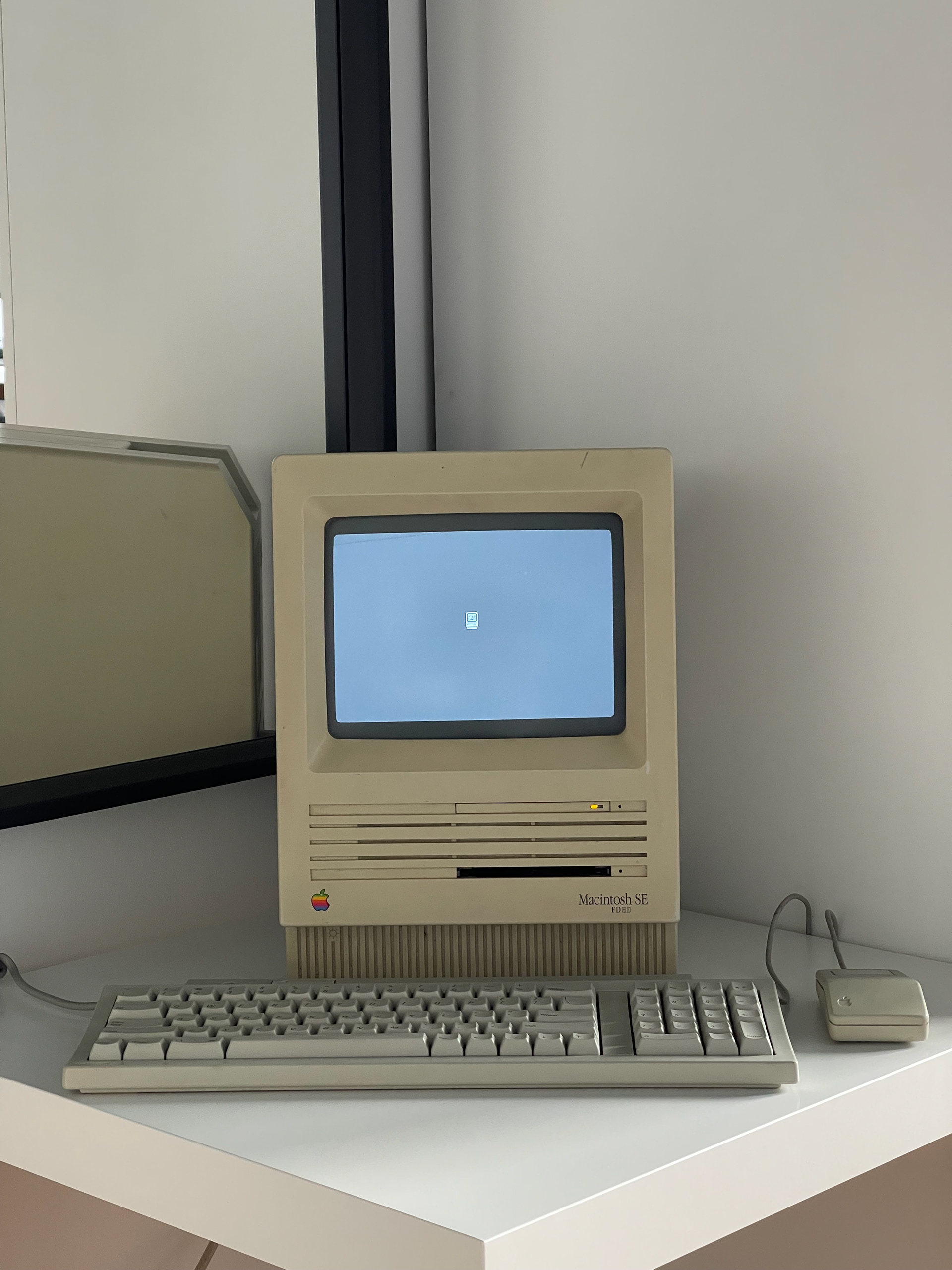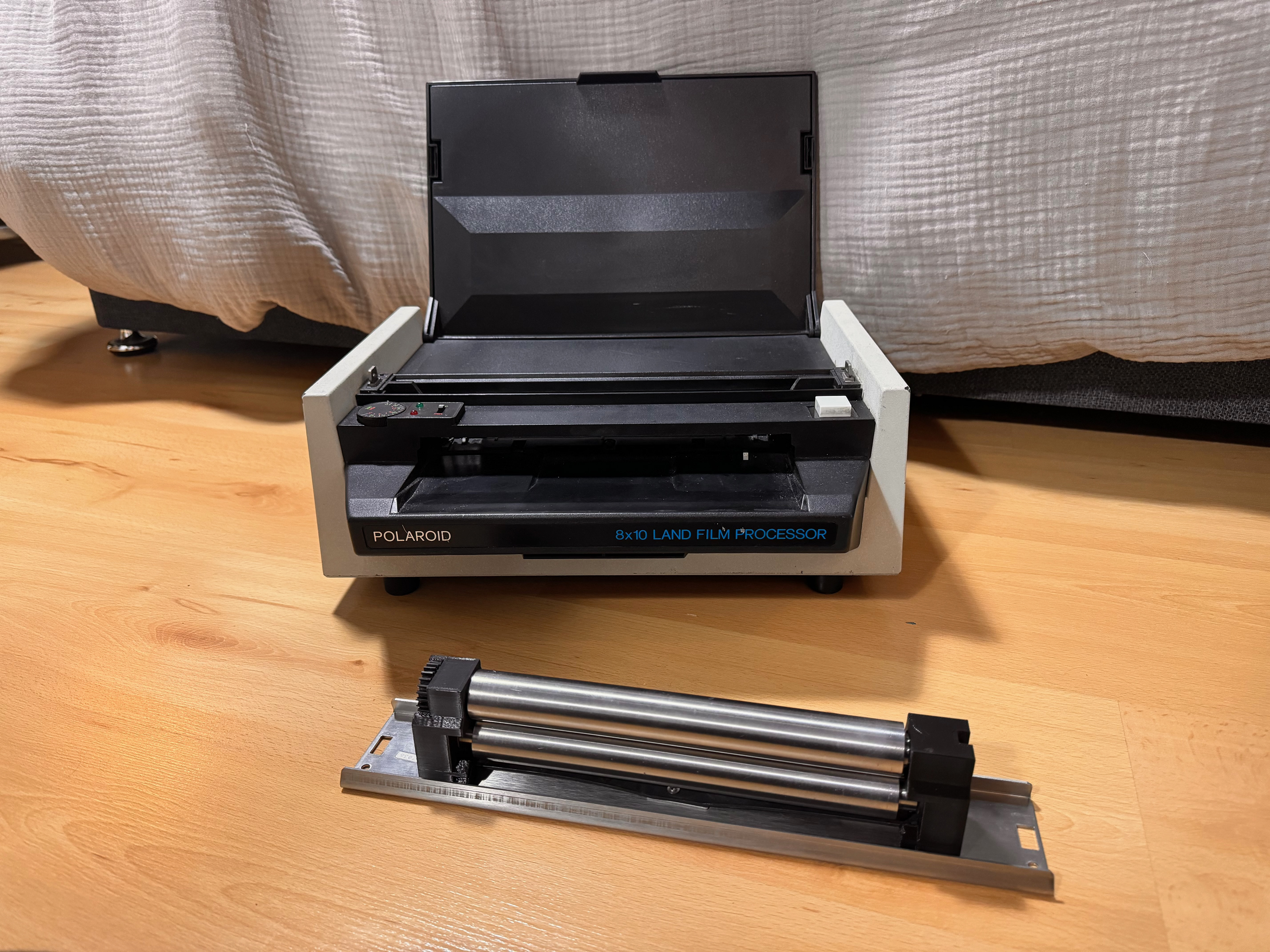MACINTOSH SE FDHD - REPAIR
The photo below shows a 1989 Apple Macintosh SE FDHD computer which was purchased in partially working condition. It exhibited signs of a failed floppy disk drive. After disassembling and inspecting, I discovered an incorrect part; instead of the high-density (1.44mb) floppy disk drive it had a double density (800kb) floppy disk drive from a Macintosh Plus computer. This was replaced with the correct working part. This computer is particularly difficult to work on due to high voltage components related to the CRT display.



ARDUINO
A relay controlled timer to switch a 12v driver, intended for photographic printmaking application. This photograph shows the prototype, made using an Arduino, OLED display, LED indicator, relay, button and potentiometer to be able to select a time and trigger the timer for the specified amount of time. This was used in-line with a 12v driver to switch an array of ultraviolet LED's for cyanotype prints. A modified version of the code allows fine adjustment of the exposure time, for printing from film negatives with a dichroic lamp in an enlarger; this requires exposures in seconds and milliseconds rather than minutes.
3D PRINTING - POLAROID 8X10 PROCESSOR REPAIR
8x10 polaroid film requires a special processor to spread the chemical pouch to develop the film. This processor was damaged and inoperable due to two 2 plastic components that hold and drive the rollers used to spread the chemicals. This required the roller assembly to be taken apart and the broken components to be modeled and 3D printed to complete a repair. I used my Prusa Mini 3d printer, which is sold as a kit to be assembled. I have done multiple modifications to this printer such as replacing the extruder assembly for an uprated part by Bondtech and an uprated heatbreak to reduce the heat-creep effect which can result in filament becoming molten before reaching the nozzle. Having built three 3D printers prior, I have extensive knowledge of the workings and how to tune them for the best results. The photos below show the prototyping process and repaired roller assembly of the Polaroid 8x10 processor.


